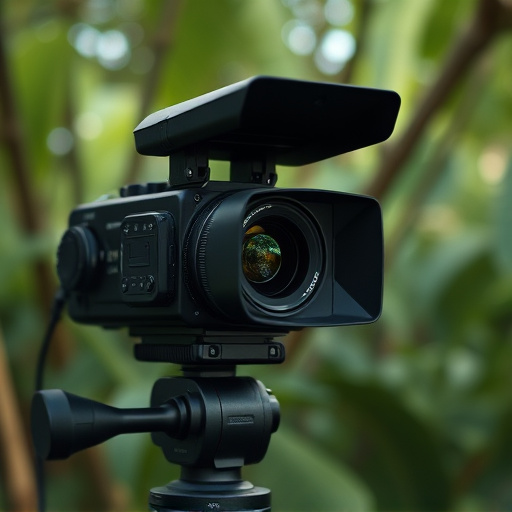Micro cameras designed for child protection offer discreet surveillance, with types disguised as everyday items. RF detection techniques are crucial in identifying these hidden cameras, using portable scanners and software analyzers to detect signals. In today's digital era, these micro cameras pose a threat to children's privacy, so implementing RF detectors and educational initiatives is vital for comprehensive child protection.
In today’s digital age, privacy concerns have reached a paramount. One of the most insidious tools used for surveillance are hidden micro cameras, often placed in seemingly innocuous objects. This guide delves into the world of micro camera detection using radio frequency (RF) technology, a powerful tool for safeguarding children and families from covert monitoring. We explore common types of micro cameras, effective RF detection methods, and essential safety measures to ensure peace of mind.
- Understanding Micro Cameras: Common Types and Placement
- Radio Frequency (RF) Detection Techniques for Hidden Cameras
- Child Safety Measures: Using RF Detectors Effectively
Understanding Micro Cameras: Common Types and Placement
Micro cameras, often used for child protection, are tiny yet powerful surveillance tools that can be easily hidden in various objects or spaces. These compact devices come in numerous types, each with unique features and applications. One common type is the miniature camera, which resembles a small button or keyfob, allowing for discreet placement on clothing or bags. Another popular variant is the USB stick camera, designed to look like everyday flash drives, capable of capturing video or still images when inserted into a computer or other USB port.
Placement of micro cameras is a strategic consideration. They can be hidden in seemingly innocuous items like toys, books, or even wall clocks. For parents seeking child protection, these cameras might be placed in children’s rooms, play areas, or cars to monitor activities and ensure safety. Their small size enables subtle integration into everyday environments, making them effective tools for surveillance while maintaining a sense of normalcy.
Radio Frequency (RF) Detection Techniques for Hidden Cameras
Radio frequency (RF) detection techniques have emerged as a powerful tool in the quest to uncover hidden cameras, particularly micro cameras designed for child protection. These tiny devices operate on specific radio frequencies, making them detectable by specialized RF detectors. Advanced RF scanners can identify and pinpoint the source of these signals, even when the cameras themselves are invisible to the naked eye.
One common approach is to sweep the area with a portable RF detector, which can detect emissions from hidden cameras. These devices often use signal strength indicators to help users locate the exact position of the camera’s transmitter. Additionally, software-based RF analyzers offer more advanced features like frequency scanning and data logging, enabling detailed analysis for investigators seeking micro cameras in sensitive environments.
Child Safety Measures: Using RF Detectors Effectively
In today’s digital era, micro cameras hidden via radio frequency (RF) signals pose a significant threat to privacy and safety, especially in sensitive areas like homes and schools where children are present. As such, implementing robust child safety measures involves equipping oneself with effective RF detectors. These devices play a crucial role in detecting hidden cameras that operate on RF frequencies, helping to safeguard young minds from potential surveillance.
Parents and educators can maximize the efficiency of these detectors by understanding their capabilities and limitations. Regular checks in common areas like bedrooms, bathrooms, and play spaces are essential. Additionally, teaching children about privacy awareness and the potential risks associated with unknown devices or unusual behavior adds another layer of protection. Together, combining technological tools with educational initiatives fosters an environment that discourages the use of micro cameras for child protection while empowering young individuals to protect their personal space and privacy.
Detecting hidden cameras using radio frequency (RF) technology is a powerful tool for ensuring privacy and child safety. By understanding the common types of micro cameras, leveraging RF detection techniques, and implementing effective child protection measures, parents and guardians can create safer environments. Remember that proactive vigilance, combined with the right tools like RF detectors, plays a crucial role in safeguarding our most vulnerable from hidden threats. In terms of micro cameras for child protection, staying informed and prepared is key to preventing potential risks.
